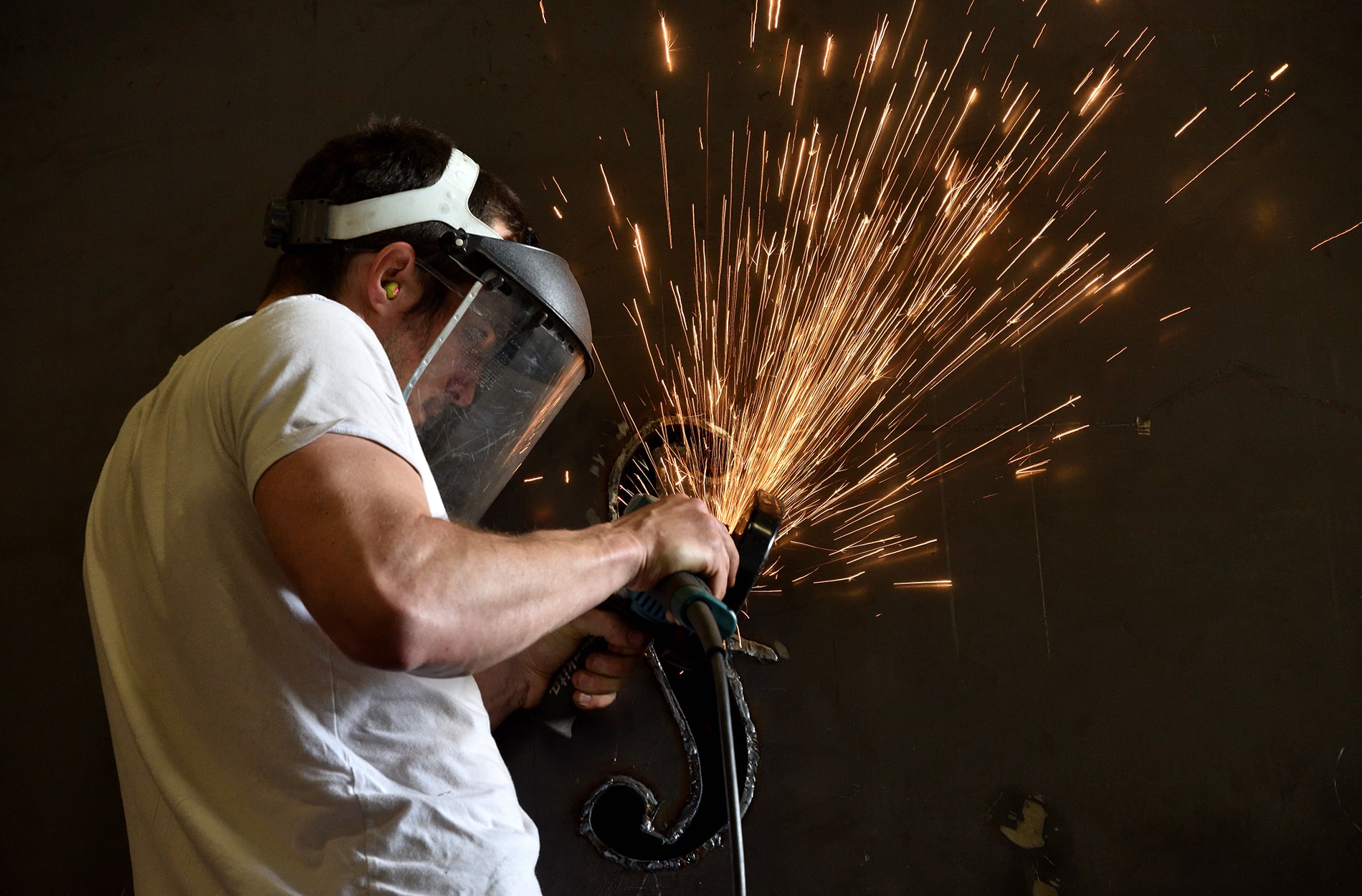Maskull Lasserre is a Canadian artist born in 1988 in Montreal. He studied sculpture at Concordia University followed by an MFA at the Glasgow School of Art in Scotland. Maskull has exhibited extensively in Canada and Europe, including solo shows in France, Belgium, Switzerland, Portugal and his native Quebec. He participated in numerous exhibitions across Canada, including shows at the Musée d’art contemporain de Montréal and La Maison Rouge / Fondation Antoine de Galbert in Paris
Maskull Lasserre’s work is a form of meditation, with the intention of elevating one’s state of being. His sculptural practice is rooted in exploring diverse materials and processes to create artworks that are both appealing aesthetically and have a meditative quality.
In his current body of work, Maskull has been experimenting with wood as a medium for sculpture. He approaches this material by carving it with electric tools to reveal its internal structure, then filling these voids with paint or plaster for contrast. The resulting sculptures appear like fossils from another world; they seem to be more than objects on display but rather extensions of nature itself—a living embodiment made out of natural substances we use every day: earth, air, water, and fire.
He is best known for his large-scale urban constructions and iconic public sculptures, including the now-famous “Widow Maker.” Banksy included one of his works on display at Dismaland, while New York’s Museum of Art and Design presented another. He has worked with Kohler Art/Industry and the Canadian Armed Forces in support of veterans’ health. His work has been commissioned by the King Baudouin Foundation in Belgium and by private collectors throughout North America.
He has worked on numerous public projects, including a mural at the University of Western Ontario and two other murals in Canada. Maskull is an accomplished artist who has taught seasonally at Concordia University, York University, and Emily Carr College in Vancouver. By surprising the familiar and unsettling expectations, his drawings and sculptures investigate the unexpected potential of everyday life, juxtaposing the natural and the artificial, destruction and creation. The works are often created through a complex layering of objects, materials, images to create immersive installations that have an evocative sense these have been unearthed or excavated from their surroundings.
Photo Credit: Patric Bravo
